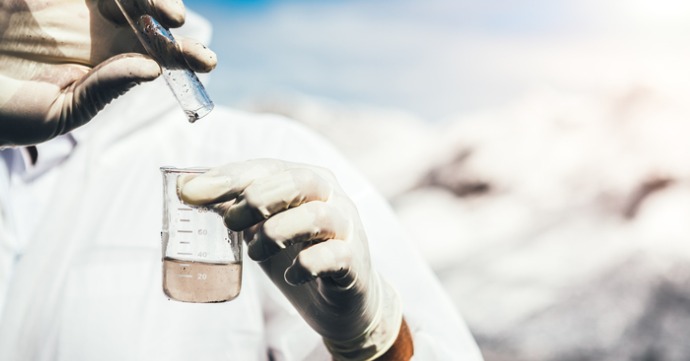
Clean, fresh water should be available to every human on earth, but unfortunately, not everyone is so lucky. In some parts of the world, people travel long distances to gather small quantities of water to survive. The water's quality may be poor, and they risk illness and even death if it’s badly contaminated. Even in developed countries where water is readily available, disease in dirty water is a possibility.
What Diseases Are In Dirty Water?
There is a wide range of diseases caused by contaminated water. Some can result in short-term symptoms and a fast recovery, while others can cause long-term illnesses or death. The disease can be transmitted from one person to another through ingesting or coming into contact with contaminated water. People in some developing nations are more at risk of waterborne diseases because they don’t have access to readily available safe drinking water and don’t have sufficient methods for disposing of their waste.
Untreated water can include diseases such as:
- Cholera
- Diarrhoea
- Dysentery
- Hepatitis A
- Typhoid
Germs and Chemicals in Water
There are a range of germs that can contaminate treated drinking water including:
- Cryptosporidium
- Campylobacter
- E. coli
- Enterovirus
- Giardia
- Hepatitis A virus
- Legionella
- Norovirus
- Rotavirus
- Salmonella
- Shigella
The chemicals that can contaminate treated drinking water include:
- Arsenic
- Copper
- Lead
- Nitrate
- Radon
Chemicals and germs can even appear in water that has been treated to drinking water standards.
How is Water Contaminated?
Water can be contaminated from different activities on land, which then run off into water sources. The most harmful activities include:
- Pesticides, fertilisers and chemicals applied to crops
- Large animal farming operations
- Stormwater
- Sewer overflows
- Manufacturing
- Wildlife
Effects of Dirty Water on Humans
Dirty, contaminated water can be found anywhere in the world, particularly following a natural disaster. Most people in more developed countries have access to safe, clean drinking water adequately treated before being available to the population. However, in less developed countries, ingesting contaminated water is a daily risk. The water may make them feel unwell or be fatal depending on the contamination and their general health.
Short-Term Effects of Contaminated Water
Stomach pain, nausea and diarrhoea are symptoms of drinking water contaminated with pathogens from human or animal waste. While they may only last a day or two in most people, there are parts of the population who are more at risk. Children, the elderly, sick or immune-suppressed and pregnant women can become seriously ill from polluted water. The World Health Organisation estimates that around 1 million people die each year from diarrhoea caused by unsafe drinking water.
Medium-Term Effects of Contaminated Water
Ingesting water contaminated with several diseases can cause illness that lasts for weeks or months. Typhoid fever can be transmitted via contaminated water or food and can be treated with antibiotics, but antimicrobial resistance is becoming more common. Even when symptoms disappear, people can shed the bacteria in their faeces and pass it on to others through poor food handling.
Chemical pollutants such as chlorinated solvents are linked to the inflammation of the liver, liver failure, kidney failure, and kidney stones and can also aggravate other diseases.
Polio can be transmitted to other people through water contaminated by the faeces of an infected person. The infection impacts the nervous system, causing headaches, seizures, weakness, and paralysis.
Fluoride naturally occurs in groundwater. In high concentrations in drinking water, it can cause fluorosis, which can negatively affect teeth and bones.
Ingesting food or drinking water contaminated with hepatitis A can cause months-long symptoms, including abdominal pain, depression, nausea, fatigue, weight loss, jaundice and fever.
Long-Term Effects of Contaminated Water
Exposure to low doses of chemicals over a long period can lead to long-term and severe health problems. Small quantities of arsenic, asbestos, radon, disinfectant byproducts and chemicals from agriculture production in water can cause cancer. Arsenic has been linked to bladder and skin cancers.
Lead can leach into drinking water from old water pipes and solders, causing anaemia, reproductive system issues, high blood pressure, and kidney and nervous system problems.
Green Drain™
Water can also be contaminated by the bacteria living in the drain’s biofilm. Microorganisms, including bacteria, viruses, algae, and fungi, stick together and grow on the surface of a drain. Biofilm bacteria can come up through the sink drain, resulting in air, water, and surface contamination around the drain.
The only way to effectively keep the dangerous biofilm microorganisms away from humans is to retrofit drains with Green Drain™. The physical trap means sinks and drains can flush out without the risk of any nasty bacteria or viruses that live in the drain from entering the room.
If you or your organisation is looking for more information on effective products to stop the transmission of diseases, get in touch with Helix Solutions on 1300 29 32 32 or contact us online.